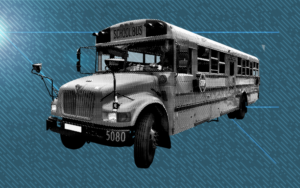An increasing number of young Americans are enrolling in trade programs, marking a continued attitudinal shift away from four-year degrees as a path toward financial security.
The United States’ need for skilled trade workers and the significant detriment of high student loan debt has increased the appeal of trade programs for young adults beginning their careers.
The National Student Clearinghouse, a nonprofit that reports on educational trends, found mechanic and repair trade program enrollment increased by 11.5% between 2021 and 2022, construction trade enrolment by 19.3%, and culinary programs by 12.7%.
Enrollment in public two-year colleges declined by 7.8% while enrollment in public four-year colleges declined by 3.4%.
The impact of nationwide restrictions and stay-at-home orders following the global outbreak of COVID-19 in 2020 is believed to have contributed to a decrease in college enrollment.
“In Tennessee, the state’s overall community college enrollment took a hit during the pandemic, despite a 2015 state program that made community college tuition free,” report AP News. “But at the Tennessee College of Applied Technology, a network of 24 colleges that offers training for 70 occupations, many trade programs have continued to grow.”
Collectively, American student loan debt totals $1.75 trillion. There are 43.2 million people who owe some amount of money in student loans, the vast majority of which are owed to the federal government. The average borrower owes $39,351 and 2.6 million people owe more than $100,000 in student loans. At least half of borrowers have growing loan balances.
“Many young people who are choosing a trade program over a traditional four-year degree say that they are doing so because it’s much more affordable, and they see a more obvious path to a job,” reports The Christian Science Monitor.
The U.S. has been experiencing a skilled labor shortage for several years, in part due to the retirement of the baby boomer generation. In 2021, Berkshire Hathaway’s Business Wire reported that “the number of skilled trade jobs in the U.S. is far outpacing the supply of qualified workers to fill them.”
“The skilled trades are in dire need of workers right now, with a particularly high demand for apprentice-level and skilled labor positions. These are steady, well-paying jobs that hold a bright future, even in an unpredictable economic climate,” said Jill Quinn, the executive leader of PeopleReady Skilled Trades, told the outlet. “For the millions of Americans who are struggling in their job hunt right now, our message is simple: Consider a career in the skilled trades.”
PeopleReady found plumbers, carpenters, roofers, construction workers, and electricians reported a serious need for apprentices.
As of February of 2022, approximately 8 million skilled-labor jobs were lost from the labor force due to the COVID-19 pandemic and resulting regulations, per Fox News.
Job search website Indeed.com reported in March of 2023 that statistics from the Bureau of Labor Statistics estimated a serious need for multiple skilled labor positions, including custodians, legal assistants, bus drivers, welders, brick masons, crane operators, carpenters, HVAC technicians, licensed practical nurses, home inspectors, electricians, aircraft mechanics, and boilermakers.
“When young people aren’t tethering themselves to student loan debt, prosperity will abound, and by cultivating fulfilling careers in the trades industry, their opportunities will know no limits,” wrote Letitia Hanke, the President and CEO of Alternative Roofing Solutions, Inc., for Forbes in December of 2022.

